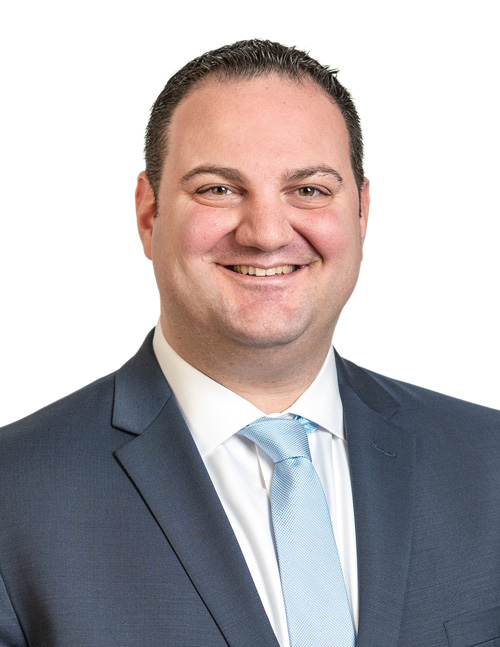
Even with 2023 behind us, it is not too late to take a closer look at how your business will perform financially in 2024 and plan ahead to maximize the outcome. This is best achieved through the annual budgeting and forecasting process, which many manufacturers and distributors overlook at year-end.
There are many reasons why private companies neglect budgeting. First, they don’t face the same transparency and reporting requirements as public companies, making budgets and cash flow forecasts “optional.” Many don’t have the data they need to make informed decisions. And others assume that knowing the amount of cash they have in the bank is enough to plan for the future.
In reality, a strong financial budget and cash flow forecast should become the backbone of every decision your company makes in the year ahead. Your cash balance at the beginning of the year is not enough to base your spending, hiring, inventory and other critical decisions.
Budgeting and forecasting are even more critical in times of economic instability. With layoffs, corporate bankruptcies and supply chain issues still plaguing the U.S. economy, manufacturers and distributors cannot afford to miss the opportunity to proactively identify areas of risk and opportunity.
For fewer budgetary surprises this year, follow these steps to a well-executed cash flow budgeting and forecasting process.
Planning Your Budget
Like every strategic business process, budgeting starts with planning. Given the rapidly changing business and economic landscape, a situational analysis is recommended before beginning the budgeting process each year.
The most commonly used situational analysis is SWOT, which helps business leaders evaluate strengths, weakness, opportunities and threats (SWOT) in relation to the company’s overall objectives. This exercise can help you determine how to allocate resources, prioritize budget items, maintain inventory, identify risks, and other budgeting best practices.
It is important that your budget planning also includes a competitive market analysis. Advisory firms like Grassi can provide benchmarking reports that compare your company’s key performance indicators (KPIs) to that of its industry peers and identify where improvements can be made. Looking at what competitors are doing in terms of layoffs, consolidations and other headline-making developments can also show areas of opportunity, such as skilled labor you can recruit or new gaps in product or service lines your company can fill.
Forecasting Cash Flow
The annual budget should be paired with a 13-week cash flow model that is continually monitored throughout the year. When periods of cash constraint are identified, you can take proactive steps to identify other sources of cash or expense reduction. On the other hand, times of surplus can be an opportunity to explore upgrades in technology, facilities or other priority areas.
Various factors affect cash flow and should be evaluated as part of an effective plan. These include accounts payable, material purchases (inventory committed and forecasted), and collections (open receivables, estimated from backlog, projected sales).
Budget Methods
Once you have established the strategy and cash flow driving your budget, you will need to decide on the method to execute it. In top-down budgeting, senior management prepares a high-level budget based on overall company objectives, which is then passed down to managers for implementation. In bottom-up budgeting, the departments prepare budgets (based on the same company objectives), and the financial team or budget committee approves or disapproves line items.
Some companies also employ a zero-based budgeting method in their bottom-up process, whereby the departments start with a “clean slate” each year in order to ensure current priorities and goals are being addressed and necessary adjustments are being made.
In particularly uncertain times, flexible budgets can be useful to plan for different scenarios. These budgets allow for adjustments as the company experiences different levels of revenue and expenses than originally expected. Like the cash flow forecast, budgets are continually monitored throughout the year and adjusted for unforeseen changes or marketplace issues that may arise.
Communicating the Budget
Regardless of the type of budget method you choose, one crucial factor in its effectiveness is how well you communicate it to the entire company. Having buy-in from management and all levels of employees will help to ensure the budget is understood and upheld throughout the year, and also allows for assignment of responsibility to make sure that respective individuals are held accountable.
Remember to reach out to your vendors, customers, lenders and other parties if you need to communicate requests for price concessions, quality improvements, delays or any other inevitable effects of the new budget. And don’t forget that all-important call to your CPA to help you identify the required to build the most reliable budget and forecast.
Other Considerations
In addition, make sure your budget is:
Tied to operations. What you discover in the cash forecast and plan for in the budget need to be directly reflected in your operational strategies. Changes may need to be made in the areas of spending, space utilization, production levels, manufacturing capacity and more. This is the time to consider what changes will grow revenues most effectively and how. For example, if a new product launch is the goal, consider timing, marketing efforts, upfront costs, stock commitments, and the impact on other product sales when determining the overall budget.
Measured by Key Performance Indicators. KPIs are not only useful in the budget planning phase to establish your starting point. Also pre-determine which metrics will be used throughout the year to measure if budgetary goals are being met and to provide transparency to all stakeholders. Examples include backlog, inventory levels, incoming order rates, Channel inventory position, and labor spending vs. applied into inventory. Any anomalies in these figures throughout the year may trigger the need for an adjustment in spending and/or funding.
Subject to continuous improvement. Just like all processes in your business, annual budgeting and forecasting is not a “one-and-done” approach. When annual budgeting comes around again, reflect on what went right and what went wrong in the prior year’s budget, and make improvements for a more accurate and smooth budget process in the current year.
For more information on budgeting and projecting cash flow for your business, please contact Michael Violano, CPA, Partner in Grassi’s Manufacturing & Distribution practice, at mviolano@grassiadvisors.com.
 Michael Violano is an Audit Partner at Grassi and has extensive experience providing audit, accounting and consulting services to companies ranging from start-ups to Fortune 500s in the public and private sectors in both domestic and international markets. Michael has embraced the Firm’s philosophy of “entrepreneurs helping entrepreneurs” by keeping his focus on working directly with business owners in the private sector to… Read full bio
Michael Violano is an Audit Partner at Grassi and has extensive experience providing audit, accounting and consulting services to companies ranging from start-ups to Fortune 500s in the public and private sectors in both domestic and international markets. Michael has embraced the Firm’s philosophy of “entrepreneurs helping entrepreneurs” by keeping his focus on working directly with business owners in the private sector to… Read full bio






















